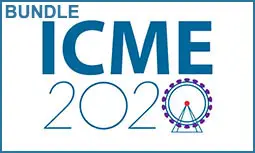Exploring Structure-Adaptive Graph Learning for Robust Semi-Supervised Classification
Xiang Gao, Wei Hu, Zongming Guo
-
Members: FreeSPS
IEEE Members: $11.00
Non-members: $15.00Length: 08:24
08 Jul 2020
Graph Convolutional Neural Networks (GCNNs) are generalizations of CNNs to graph-structured data, in which convolution is guided by the graph topology.
In many cases where graphs are unavailable, existing methods manually construct graphs or learn task-driven adaptive graphs. In this paper, we propose Graph Learning Neural Networks (GLNNs), which exploit the optimization of graphs (the adjacency matrix in particular) from both data and tasks. Leveraging on spectral graph theory, we propose the objective of graph learning from a sparsity constraint, properties of a valid adjacency matrix as well as a graph Laplacian regularizer via maximum a posteriori estimation. The optimization objective is then integrated into the loss function of the GCNN, which adapts the graph topology to not only labels of a specific task but also the input data. Experimental results show that our proposed GLNN significantly outperforms state-of-the-art approaches over widely adopted social network datasets and citation network datasets for semi-supervised classification.
In many cases where graphs are unavailable, existing methods manually construct graphs or learn task-driven adaptive graphs. In this paper, we propose Graph Learning Neural Networks (GLNNs), which exploit the optimization of graphs (the adjacency matrix in particular) from both data and tasks. Leveraging on spectral graph theory, we propose the objective of graph learning from a sparsity constraint, properties of a valid adjacency matrix as well as a graph Laplacian regularizer via maximum a posteriori estimation. The optimization objective is then integrated into the loss function of the GCNN, which adapts the graph topology to not only labels of a specific task but also the input data. Experimental results show that our proposed GLNN significantly outperforms state-of-the-art approaches over widely adopted social network datasets and citation network datasets for semi-supervised classification.



